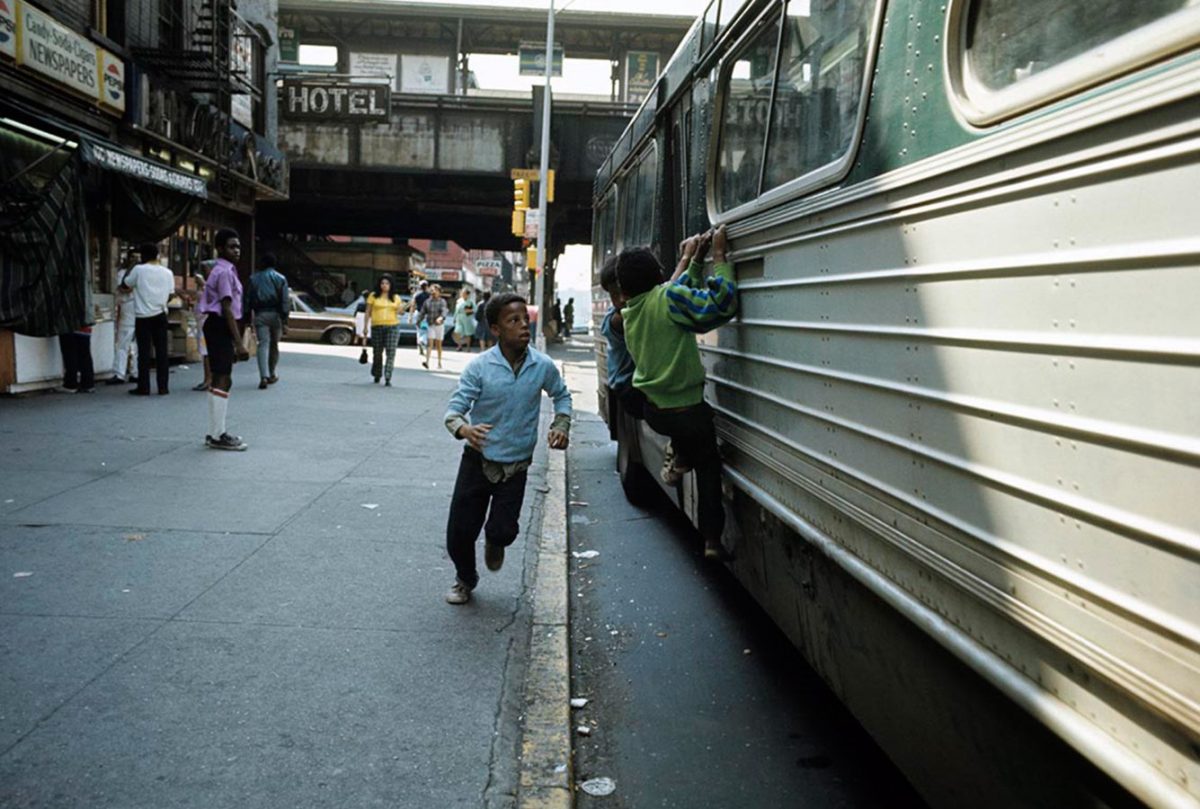
What made 1970s Harlem such a unique place? Harlem in the 1970s was a vibrant mix of culture, struggle, and resilience. Known for its rich history in music, art, and activism, this neighborhood became a hub for African American culture. Jazz clubs, soul food joints, and street art painted a picture of a community that thrived despite economic hardships. The era saw the rise of influential figures like James Baldwin and Malcolm X, who inspired many with their words and actions. Social movements and grassroots organizations played a crucial role in advocating for civil rights and community improvement. Harlem's unique blend of creativity and activism made it a beacon of hope and a symbol of cultural pride.
Key Takeaways:
- 1970s Harlem was a vibrant hub of culture, music, and activism, birthing hip-hop, nurturing artistic expression, and fostering social change.
- Despite economic challenges, Harlem in the 1970s showcased resilience, with community activism, youth programs, and the arts leaving a lasting impact on the neighborhood and beyond.
The Vibrant Culture of 1970s Harlem
Harlem in the 1970s was a melting pot of culture, music, and social change. This neighborhood in New York City became a hub for artistic expression and community activism.
-
Harlem was the birthplace of hip-hop. The genre emerged in the early 1970s, with DJs like Kool Herc throwing block parties that featured innovative music mixing techniques.
-
The Apollo Theater was a cultural landmark. This historic venue hosted performances by legends like James Brown and Aretha Franklin, solidifying its place in music history.
-
Graffiti art flourished. Street artists used Harlem's walls as canvases, creating vibrant murals that reflected the community's struggles and triumphs.
-
Jazz clubs were everywhere. Venues like Minton's Playhouse and the Lenox Lounge offered live jazz performances, attracting music lovers from all over.
-
Soul food restaurants thrived. Establishments like Sylvia's served up traditional Southern cuisine, becoming beloved community gathering spots.
Social and Political Activism
The 1970s were a time of significant social and political change in Harlem. Activists and community leaders worked tirelessly to address issues like poverty, housing, and civil rights.
-
The Black Panther Party had a strong presence. They provided free breakfast programs for children and advocated for social justice.
-
Harlem was a center for the Civil Rights Movement. Leaders like Malcolm X and Martin Luther King Jr. held rallies and speeches in the neighborhood.
-
Tenant associations fought for better housing. Residents organized to demand improvements in living conditions and rent control.
-
The Young Lords were active. This Puerto Rican nationalist group focused on issues like healthcare and education for the Latino community.
-
Community gardens were established. Residents transformed vacant lots into green spaces, promoting urban agriculture and environmental awareness.
Economic Challenges and Resilience
Despite its cultural vibrancy, Harlem faced significant economic challenges in the 1970s. High unemployment rates and poverty were prevalent, but the community showed remarkable resilience.
-
Unemployment rates were high. Many residents struggled to find stable employment, leading to widespread economic hardship.
-
Businesses closed down. Economic decline led to the shuttering of many local businesses, impacting the neighborhood's economy.
-
The heroin epidemic hit hard. Drug addiction became a major issue, affecting many families and contributing to crime rates.
-
Community organizations provided support. Groups like the Harlem Children's Zone offered educational and social services to help residents.
-
Local entrepreneurs emerged. Despite challenges, some residents started their own businesses, contributing to the neighborhood's economic recovery.
Education and Youth Programs
Education and youth programs played a crucial role in shaping the future of Harlem's younger generation. Various initiatives aimed to provide better opportunities and support for children and teenagers.
-
The Harlem Children's Zone was founded. This organization focused on education, offering programs to help children succeed academically.
-
After-school programs were popular. Many schools and community centers offered activities to keep kids engaged and off the streets.
-
Mentorship programs flourished. Older community members mentored youth, providing guidance and support.
-
Sports leagues were established. Basketball and baseball leagues gave young people a chance to develop their skills and stay active.
-
Arts education was emphasized. Programs in music, dance, and theater helped nurture the creative talents of Harlem's youth.
The Influence of Religion
Religion played a significant role in the lives of many Harlem residents during the 1970s. Churches and religious organizations provided spiritual guidance and community support.
-
Churches were community hubs. Places like Abyssinian Baptist Church offered not only religious services but also social programs.
-
Gospel music was popular. Many churches had choirs that performed powerful gospel music, uplifting congregations.
-
Religious leaders were activists. Figures like Reverend Al Sharpton used their platforms to advocate for social justice.
-
Interfaith collaborations occurred. Different religious groups worked together on community projects and initiatives.
-
Religious festivals were celebrated. Events like Easter and Christmas brought the community together for celebrations and services.
The Arts and Literature Scene
Harlem's arts and literature scene in the 1970s was vibrant and influential. Writers, poets, and artists used their work to reflect the experiences and aspirations of the community.
-
The Harlem Writers Guild was active. This group supported African American writers, helping them publish their work.
-
Poetry readings were common. Venues like the Schomburg Center hosted events where poets shared their work.
-
Visual artists gained recognition. Painters and sculptors from Harlem showcased their work in galleries and exhibitions.
-
Theater productions thrived. The Harlem Community Theater and other groups put on plays that addressed social issues.
-
Literary magazines were published. Publications like "Black World" featured the work of Harlem writers and poets.
Sports and Recreation
Sports and recreation were important aspects of life in 1970s Harlem. Athletic programs and events provided opportunities for physical activity and community bonding.
-
Basketball was a favorite pastime. Local courts were always busy with pick-up games and organized leagues.
-
The Rucker Park tournament was legendary. This annual basketball event attracted top talent and enthusiastic crowds.
-
Boxing was popular. Gyms like Gleason's trained many aspiring boxers from Harlem.
-
Track and field events were held. Schools and community centers organized competitions for young athletes.
-
Recreational centers offered activities. Places like the Harlem YMCA provided swimming, fitness classes, and other programs.
The Legacy of 1970s Harlem
The legacy of 1970s Harlem continues to influence the neighborhood and beyond. The cultural, social, and political contributions of this era have left a lasting impact.
-
Hip-hop's global influence. The genre that started in Harlem has become a worldwide phenomenon.
-
Cultural institutions remain. Landmarks like the Apollo Theater and the Schomburg Center continue to celebrate Harlem's rich history.
The Legacy of 1970s Harlem
1970s Harlem left a lasting impact on American culture. The neighborhood buzzed with artistic and musical innovation, birthing legends like James Brown and Aretha Franklin. The Harlem Renaissance may have started earlier, but the '70s kept the spirit alive with soul, funk, and jazz.
Social movements also found a stronghold here. Activists fought for civil rights, education, and housing, shaping the community's future. Despite challenges like economic hardship and crime, Harlem's resilience shone through.
Today, Harlem's rich history continues to inspire. Its cultural contributions and social activism remind us of the power of community and creativity. Whether you're a history buff or a music lover, Harlem's legacy offers something for everyone. Dive into its past, and you'll find a story of struggle, triumph, and enduring spirit.
Frequently Asked Questions
Was this page helpful?
Our commitment to delivering trustworthy and engaging content is at the heart of what we do. Each fact on our site is contributed by real users like you, bringing a wealth of diverse insights and information. To ensure the highest standards of accuracy and reliability, our dedicated editors meticulously review each submission. This process guarantees that the facts we share are not only fascinating but also credible. Trust in our commitment to quality and authenticity as you explore and learn with us.


